Kraków 2009-04-25
Former Rakowice Czyżyny airport in Krakow.
Geographic coordinates: 50.078N 19.992E (50.04N 19.59E). Elevation 218 m above sea level.

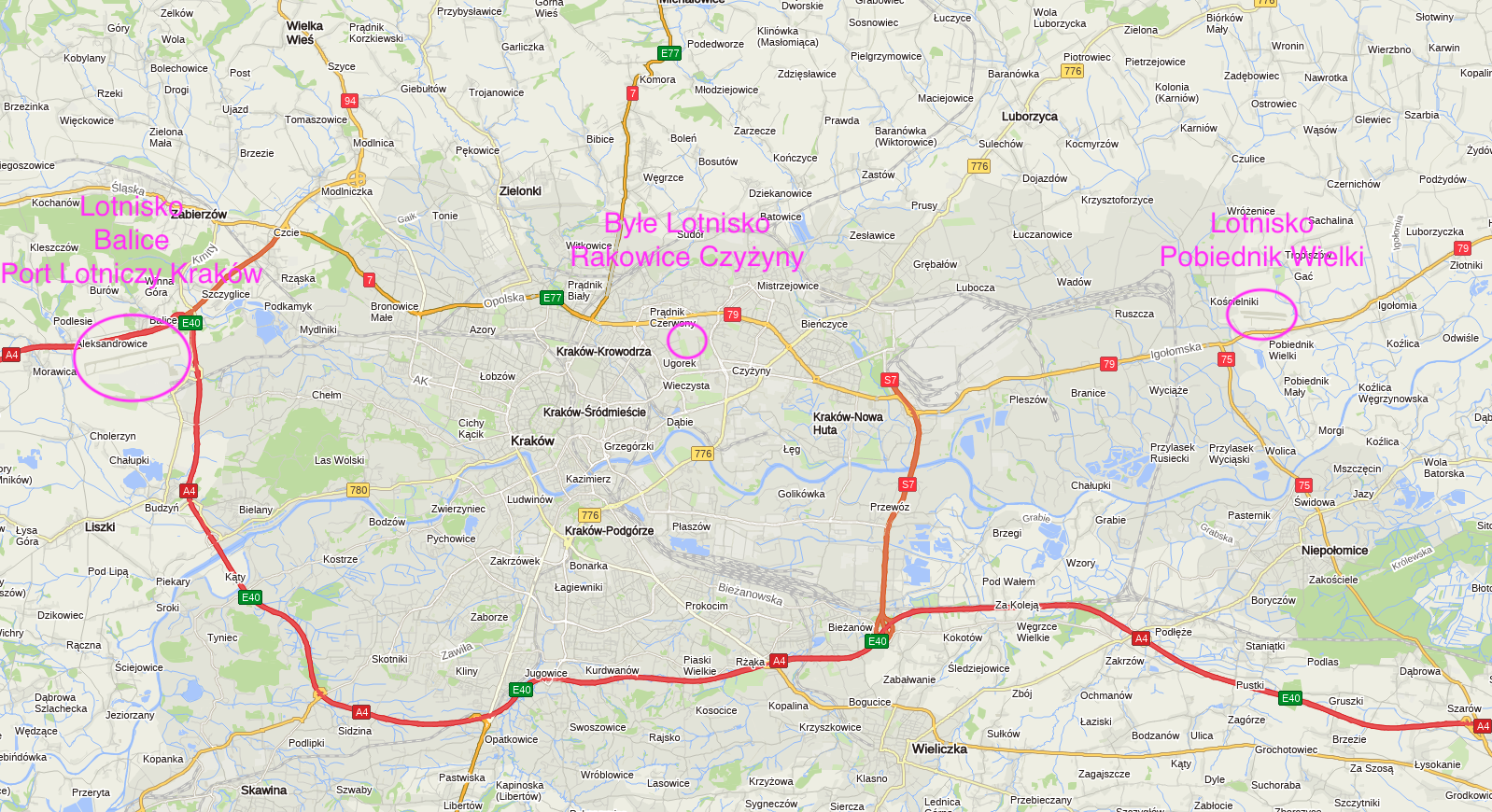
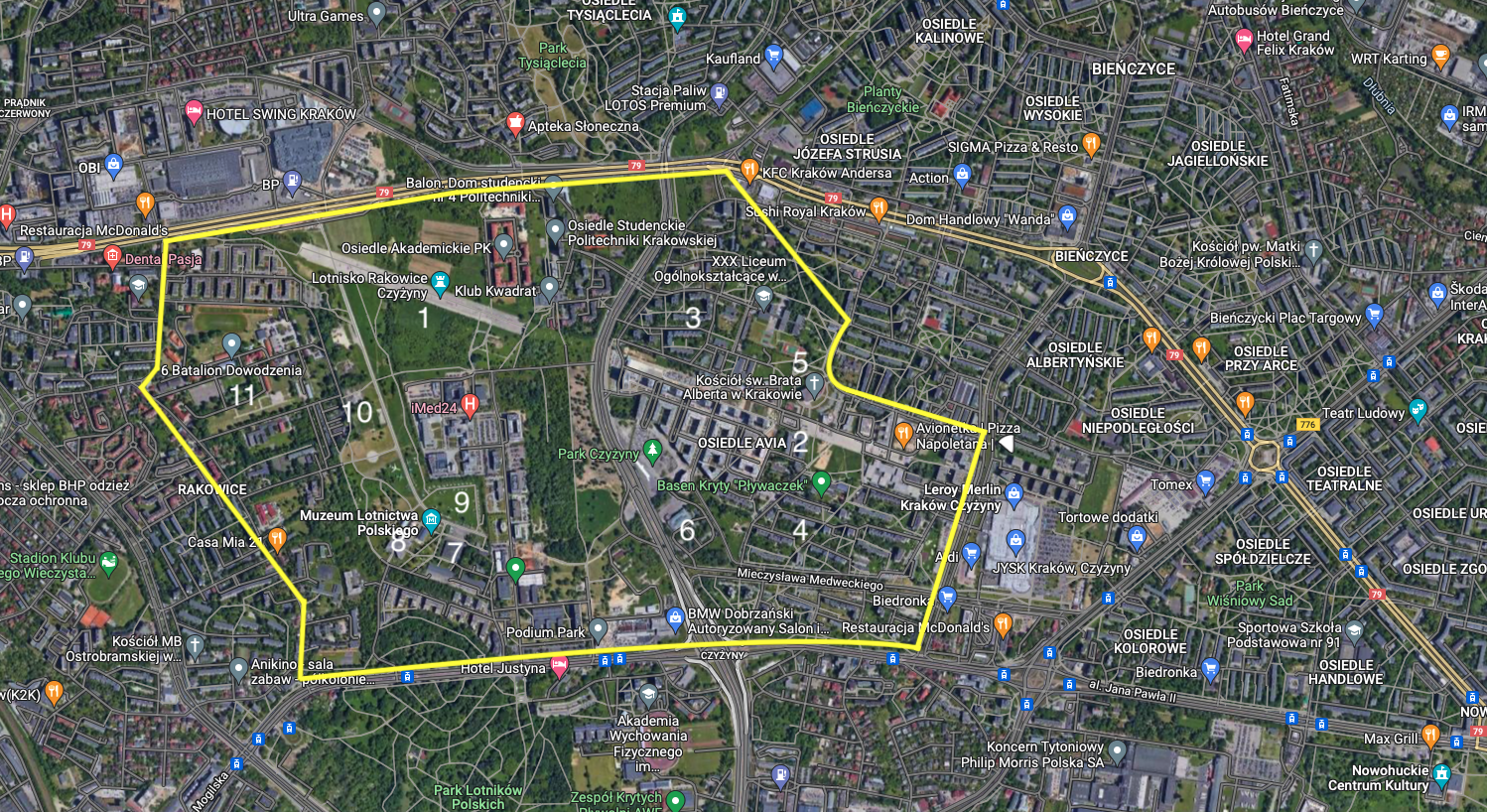
Photo description: 1 - Active part of the RWY. 2 - Inactive fragment of RWY. 3 - Housing estate of the 303 Squadron. 4 - Housing estate of the 2nd Aviation Regiment. 5 - Brother Albert's Church. 6 - Former hangar of PLL LOT, former MPK depot, now a museum facility. 7 - Former hangar of the 2nd Aviation Regiment, now a museum. 8 - Museum building. 9 - Outdoor exhibition. 10 - Former hangars. 11 - Military Unit.
Location of the Rakowice - Czyżyny airport.
The airport is located within the administrative borders of Krakow. Due to the construction of the "new socialist city" of Nowa Huta, the airport was located between Krakow and Nowa Huta, in the former districts of Rakowice and Czyżyny. Currently, part of its area is home to housing estates in Nowa Huta; 303 Squadron and the 2nd Aviation Regiment. Geographic coordinates 50.04 N 19.59 E. The airport is located at an altitude of 218 m above sea level. It always had one (concrete) runway with an orientation of 26/08. Currently, the airport is treated as an airstrip.
In its heyday, the airport occupied an irregular area close to a rectangle. It was located between today's streets; from the north, General T. Bora-Komorowskiego and General Władysław Andersa Streets, from the east, Maria Dąbrowska Street, from the south, Aleja Jana Pawła II (until 1990, Aleja 6-Year Plan), from the west, Ułanów and Akacjowa Streets. The main entrance to the airport was from Ułanów Street. The length of the area was about 2,100 m, and the width was over 1,000 m. The total area is about 220 hectares. There were over a hundred facilities related to the airport. There were seven large hangars.
The runway was concrete with a length of 1,900 m and an area of 95,000 square meters. The total length of the concrete taxiways exceeded 5,000 m and covered an area of over 100,000 square meters.
History.
The village of Czyżyny was the duke's property until the mid-thirteenth century, when it was donated to the Cistercian Order from Mogiła. It was invested under Western law in 1294 by Wenceslaus of Bohemia, which was confirmed by Casimir the Great in 1336. There is not much information in historical documents, but we know that in 1787, the nobility of the Kraków Land greeted King Stanisław August Poniatowski who arrived here. At the end of the 18th century, the main buildings in Czyżyny were a noble manor with a farm and an inn. At that time, Czyżyny with the adjacent Łęg had about 600 inhabitants and 100 houses. In the mid-nineteenth century, over 800 inhabitants lived in Czyżyny. There was also a one-class folk school.
In the 19th century, during the Austro-Hungarian occupation, when Lesser Poland was called Galicia, the Austrians stationed a unit of mounted riflemen in Rakowice. It was the area between today's Ułanów and Cieślewskiego Streets. At the turn of the 19th and 20th centuries, a sub-unit of observation balloons was placed at the local unit. Presumably it was in 1892. For their needs, the landing field and workshops for repairing damage to balloons and producing hydrogen were prepared.
In 1912, the Austro-Hungarian army bought the area east of the unit from the Cistercian (Dominican) Order. At that time there were orchards and vegetable gardens. In this area, the first tests of aircraft adopted by the occupier army were carried out. Since then, this area can be called an airport. Thanks to this, the airport in Czyżyny is one of the oldest in the world.
The area where the airport was built administratively belonged to Rakowice, which is why the term Rakowice Airport can be found in history. Since the town of Czyżyny was also gradually and systematically developing, and the airport was also in its area, the name of the airport was attached to the airport Czyżyny Airport and so it is to this day (2009).
In the autumn of 1912, the construction of the first airport facilities began here. Most of them were larger or smaller barracks and tents. In 1914, the fire station was already operational, as plane fires at that time were not uncommon. According to the available information, the occupant had a rectangular take-off area of about 250 m x 450 m and about 5-8 observation planes. According to the timetable at that time, there should be 6 machines. The construction of the first brick and wooden hangar began in 1914, but was not completed.
After the outbreak of the Great World War (at that time no one called it the first, because it was believed that it would be the last), the unit stationed in Czyżyny was sent to the Austro-Russian front, and new units arrived at the airport. When the front approached Kraków, these units actively supported the defense by performing reconnaissance tasks and correcting long-range artillery fire.
In 1915, the expansion of the airport began, the purpose of which was to significantly increase the equipment and personnel stationed here. At that time, a barracks complex was built at today's Akacjowa and Ułanów streets, consisting of six buildings with palace architecture. All this was placed in the vicinity of a park with a garden composition. The infrastructure of the airport was expanded throughout the Great World War.
After repelling the Muscovites, the importance of the airport decreased, as it ceased to be a front-line airport. But it also began to fulfill new functions. Mainly communication; transportation of mail and air parcels. On March 31, 1918, the airport became one of the staging points of the airmail connecting Vienna with Kiev, and then with Odessa. The first flights of this type were made in 1917. At that time, the airport occupied an area of 55 hectares and already had a lot of aviation facilities.
On the night of October 30/31, 1918, the airport was transferred to Polish command. An officer of the Austro-Hungarian army, a Pole, Captain Florer, with the help of Polish personnel, took over the facility, and with it about 30 aircraft, preventing their devastation. Then the captain gave the airport under the orders of the Polish Commander of the City of Krakow, Colonel Bolesław Roa. In this way, the facility became the first airport after Poland regained its independence.
The Polish authorities gradually began to expand the airport facilities. Very quickly, the airport became the second largest in the Republic of Poland, after Mokotów Airport. The airport developed both in the civilian and military direction. It was here that the foundations of Polish Aviation were created.
At this airport, the first military aviation unit in the Republic of Poland was created, called the Aviation Escadrille, whose name was soon changed to the 1st Combat Squadron. The base was systematically expanded by creating aviation workshops, the 1st Lower School of Pilots and subsequent squadrons. No sooner had Poland regained its independence than we had to fight again, this time against the Soviets. People at the Czyżyny airport worked miracles to repair as many planes as possible and send them to the front of the Polish-Soviet war.
After the war with the Soviets on August 11, 1921, based on the existing personnel and technical facilities, the famous 2nd Aviation Regiment was established. The regiment permanently entered the history of the Czyżyny airport, where it was stationed until the defensive war against the German plague.
In the mid-20s, the authorities decided to develop civil air transport between the largest cities of the Republic of Poland. On July 18, 1923, the so-called Civil Aviation Station Krakow, i.e. Rakowice Airport, was opened at the Rakowice airport. At the same time, a flight connection was opened on the Kraków-Warsaw route. In 1924, the great expansion of the airport began. The airport has increased its area five times. The spatial arrangement has changed. Objects existing to this day were created. At the end of 20 years, hangars were built, which are now (2009) occupied by the Polish Aviation Museum.
On July 18, 1927, a civilian station was opened, which was then the second largest and third largest after Warsaw and Lviv in Poland. Permanent communication with Lviv was launched. In the period 1931 - 1934, the facilities of the part of the airport located to the east of the recently commissioned facilities, at a distance of about 500 meters, were expanded. It was at that time that the hangar was built, which is now (2009) at Stella-Sawickiego Street. In 1938, a connection to Budapest was launched on the route; Warsaw - Krakow - Budapest.
When the Germans invaded Poland, the airport was practically empty. We were prepared for this attack and that is why the combat units were previously moved to field airfields, including Balice. The German plague preventively bombed the airport facilities, significantly damaging them, and then occupying them. Practically, the Germans did not put anything new here, because they had to repair what they had destroyed. They made their base here, which they then used to attack their brethren, the Soviets. They started construction of a concrete runway, but failed to complete it. Not even 50 meters of the runway was built. Traffic at the airport was heavy, as it connected Kraków (the capital of the General Government) with Berlin. In the period from autumn 1944 to January 1945, Allied B-17 bombers were seen at the airport. These were planes captured by the Germans and used to drop saboteurs behind the eastern fronts.
In January 1945, the airport was bombed again, this time by the Soviets, and the Germans, leaving the airport, blew up a lot of objects. Already on January 18, 1945, the Soviets seized the airport, bringing it to a usable condition. One of the Soviet regiments was stationed here. It was not until December 1945 that the Soviets handed over the airport to the Polish side, which was very fast considering their operation. It should be remembered that most of the airports were returned to Poland in 1950, and some only in 1992.
The destroyed buildings were slowly rebuilt. The airport returned to its military and civilian function for Poland. At the end of 1945, the Polish 10th Fighter Aviation Regiment was stationed at the airport in Kutno.
In 1946, the regiments; The 9th PLM, 10th PLM, 11th PLM were subordinated directly to the Air Force Command and already on January 24, 1946, by order of the Supreme Commander of the Polish Armed Forces, the 1st Fighter Aviation Division with a composition was established; 1st PLM in Warsaw, 2nd PLM in Kraków (previous 10th PLM), 3rd PLM in Wrocław (previous 11th PLM). The main task of the 2nd PLM was anti-aircraft defense of Kraków.
This organizational system lasted until 1950. Due to the war in Korea, the Soviets forced Poland to expand the army to an excessive size in relation to the actual needs. As a result, new tactical units began to be formed. The 2nd PLM in Krakow emerged from the structures of the 1st DLM and on its basis the 7th DLM OPL was formed with headquarters and command in Krakow. Three hunting regiments were to function within the 7th DLM OPL; in addition to the 2nd PLM in Kraków-Czyżyny, the newly created 39th PLM in Mierzęcice and the 40th PLM also in Mierzęcice.
At the end of the 40s, it was already known that the end of piston-powered fighters was approaching and the first turbojet machines were introduced into service. The 2nd PLM was one of the first to change over to the new type of fighters. Initially, they were supposed to be Yakovlev Yak-17 aircraft.
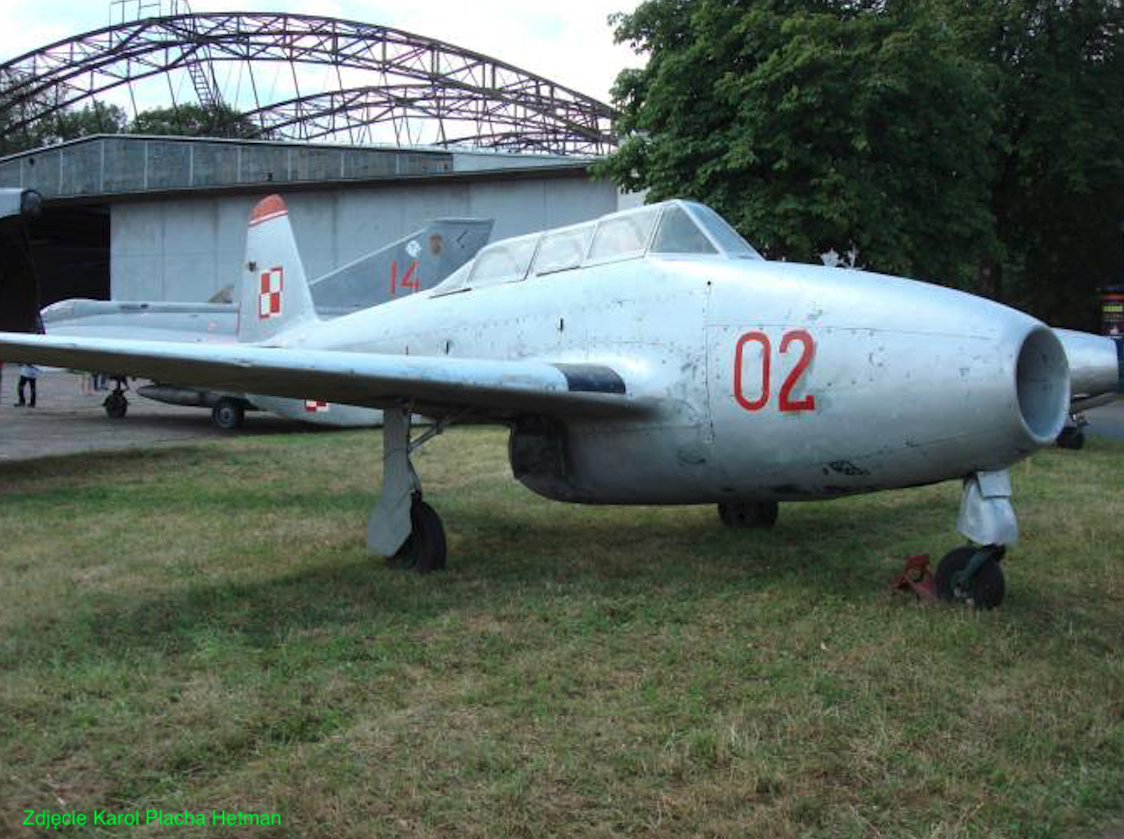
In 1950, it was clear that this aircraft would be the Yakovlev Yak-23 fighter, the serial production of which was even prepared in Mielec. To make it easier for pilots to switch to a turbojet, a two-seater Jak-17 W (UTI) was used. From 1952, the 2nd PLM with Yak-23 aircraft began its operation at the Czyżyny airport. The Błędowska Desert range was intensively used in the training process. The commander of the unit at that time was Jan Frej-Bielecki. Jak-23 fighter planes appeared in Czyżyny for several years, and the Regiment was one of those that used this type for the longest time.
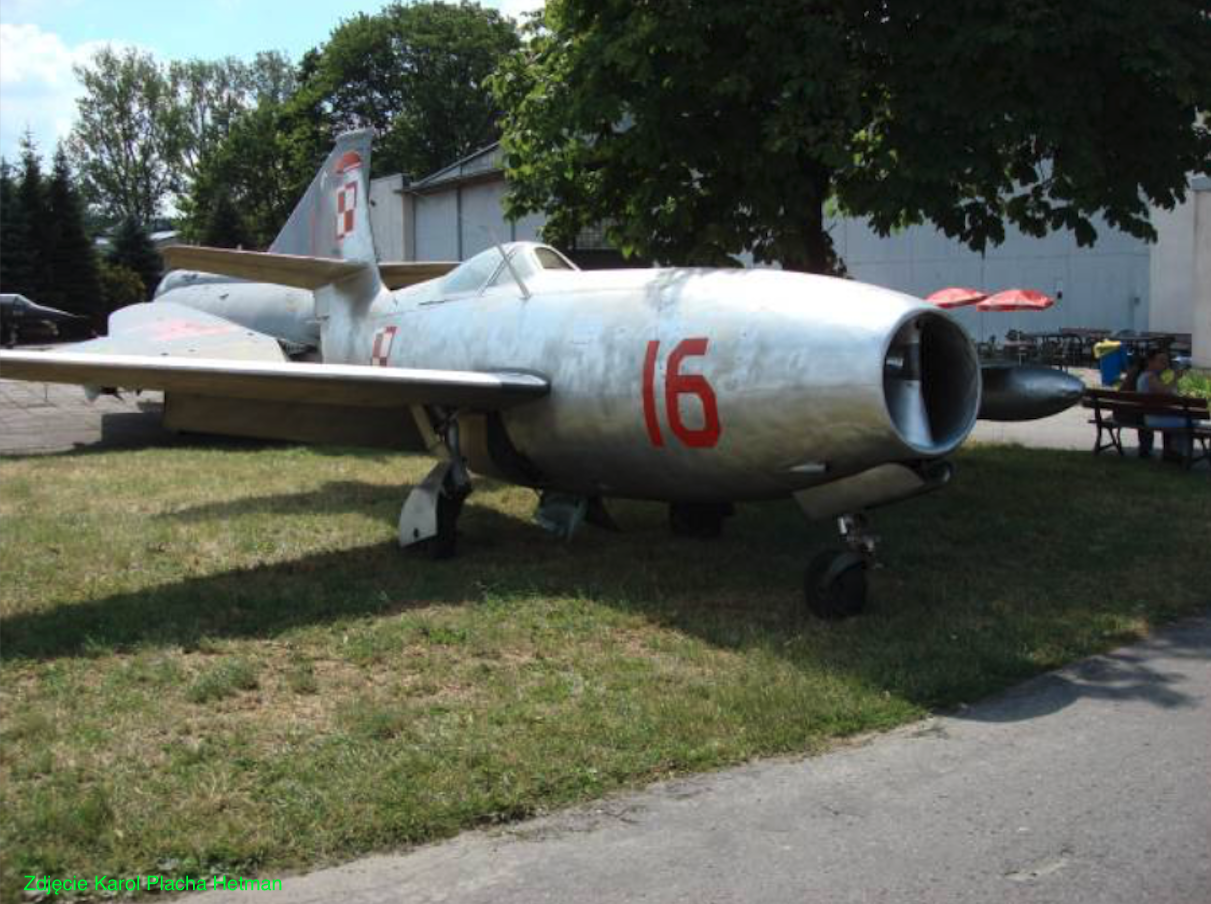
At the beginning of the 50s, the airport began to develop intensively in terms of infrastructure. In the 50s, the Rakowice-Czyżyny airport had a runway measuring 1,900 m x 45 m, with a concrete surface. The airport had full facilities. At that time, it was also used as a civilian airport for the city of Krakow.
On September 27, 1954,. The regiment entered its possession of the first Lim-1 aircraft in the number of 10 machines. The aircraft come from the 11th and the last 12th production series. Their numbers are; 1A 11-002, 1A 11-003, 1A 11-004, 1A 11-005, 1A 11-017, 1A 11-018, 1A 12-005, 1A 12-007, 1A 12-009, 1A 12-011.
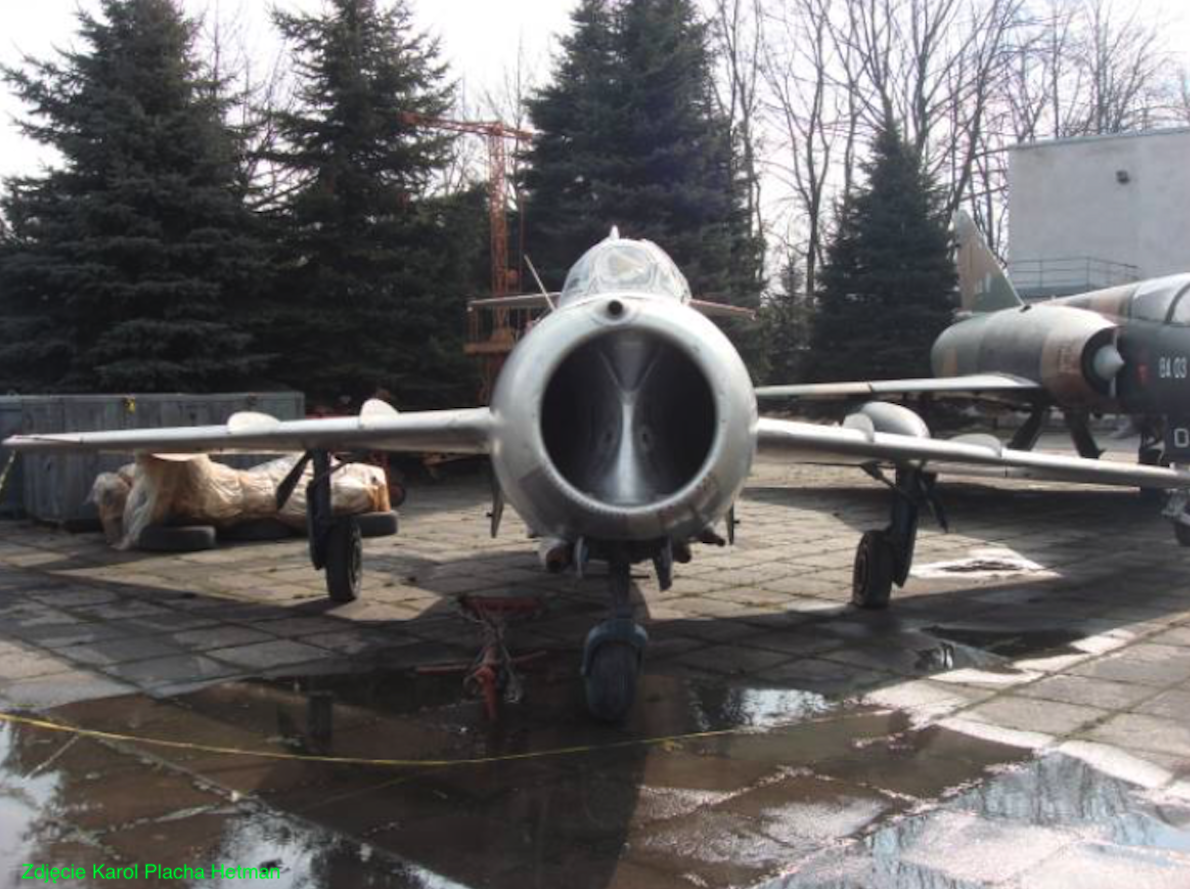
From 1956, apart from the Polish Army and PLL-LOT, the airport was also used by the Aero Club of Krakow, and from 1957, the Sanitary Aviation Station operated. In 1961, the airport handled 39,027 passengers, and in 1962, already 56,535 passengers.
The development of the airport was stopped by the communist authorities because of the decision to build the "socialist city" of Nowa Huta on the eastern side. The second significant reason for the decline in the importance of the Czyżyny airport was the large distance from a potential enemy, which was seen in the west and north of Europe. Nevertheless, the 2nd PLM was still a part of WOPL OK and WL and safely performed its tasks, improving the level of training.
In 1963, the decision to liquidate the Civil Airport was implemented, and the dismantling of the 2nd PLM was a matter of months. The 2nd PLM in Czyżyny was disbanded in 1966, and its number and traditions were taken over by the 4th PLM in Goleniów, which in 1967 was named the 2nd PLM "Kraków" in Goleniów. The military used the airport to a minimal extent until 1966. Then (1966) one of the air shows on the occasion of the 1000th anniversary of the Polish State took place at the airport. Most of the aviation equipment and personnel were transferred to the Łask airport near Łódź. The local aviation regiment was named 10. PLM.
In 1963, civil aviation was transferred from Czyżyny to the airport in Balice. But even in 1969, it was possible to use Czyżyny as an alternate airport. Civil Airport Krakow Rakowice existed in the period 1927 - 1963.
Officially, in 1963, the City of Krakow became the owner of the entire airport infrastructure. Excluding facilities at Ułanów and Akacjowa Streets. At the beginning of the 1960s, the airfield in Czyżyny became the base of unused flying equipment and slowly became a museum. The airport facilities, in the central part, were taken over by a newly established museum called the Aviation Museum.
From 1963, the discussion continued; what to do with almost 200 hectares of empty space. The planners saw there large housing estates merging Nowa Huta with Krakow, and in the subtext also the obliteration of historical traces. In 1966, the Park of Culture and Recreation was established on the undeveloped land of the airport on the southern side, which was later named Park Lotników Polskich.
Gradually, the airport area was built up. Residential estates of the 303 Squadron and the 2nd Aviation Regiment were built. The 303 Squadron housing estate was built in the period 1977 - 1988, and the 2nd Air Regiment housing estate in the period 1978 - 1990. In addition to residential blocks (4-15 storeys), two schools, four kindergartens, a nursery, two medical clinics and several service and commercial. Since 1972, the buildings of the campus of the Academy of Physical Education and the Cracow University of Technology have also been built. It must be admitted that the inhabitants were deprived of cultural and sacral objects (at least until 1980).
The entire airport, including the runway, was divided by a thoroughfare. Currently (2009) it is a dual carriageway and has two or three lanes in each direction on individual sections.
To complete the picture of the 70s and 80s of the socialist development period, we must write about the remaining areas of the former airport where nothing was built, and the area was degraded and devastated. It was on it that truck drivers poured large amounts of diesel fuel to increase the mileage of their cars, and concrete mixer drivers poured concrete when it was in danger of setting. Heaps of garbage and rubble grew. Soil was poured from nearby construction sites. About 1,500 m of taxiways were backfilled in this way. There were also wild gardens with chicken coops, beehives and even pigsties in these areas. Two generations of young people grew up on this land and learned how to smoke cigarettes, drink alcohol and administer justice. Well, socialism offered them little.
In 2008, the oldest part of the Rakowice-Czyżyny airport was entered into the Register of Monuments at the initiative of District Council III.
Written by Karol Placha Hetman
